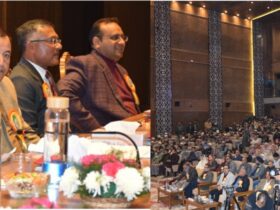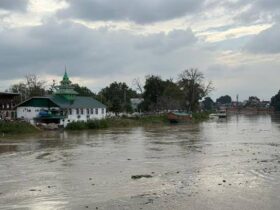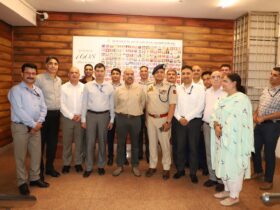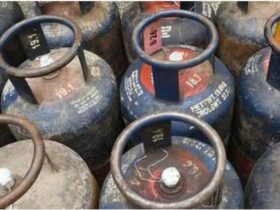writes Dr.Manzoor Ahmad Yetoo
Sustainable development and sustainability influence today’s urban planners. Some planners argue that modern lifestyles use too many natural resources, polluting or destroying ecosystems, increasing social inequality , creating urban heat islands , and causing climate change. Many urban planners, therefore, advocate sustainable cities. However, sustainable development is a recent, controversial concept sustainable urban development is defined as “development that improves the long-term social and ecological health of cities and towns.” a ‘sustainable’ city’s features: compact, efficient land use; less automobile use, yet better access; efficient resource use; less pollution and waste; the restoration of natural systems; good housing and living environments; a healthy social ecology; a sustainable economy; community participation and involvement; and preservation of local culture and wisdom Because of political and governance structures in most jurisdictions, sustainable planning measures must be widely supported before they can affect institutions and regions. Actual implementation is often a complex compromise and K state is also facing the problems of city expansion in terms of density , housing, urbanization and urban planning in resonance with the environmental concerns and need of global tools to achieve this is knocking our doors.some of the important parameters needed for an effective sustainable urban planning can be
1)Collaborative Strategic Goal Oriented Programming (CoSGOP) is a collaborative and communicative way of strategic programming, decision-making, implementation, and monitoring oriented towards defined and specific goals. It is based on sound analysis of available information, emphasizes stakeholder participation, works to create awareness among actors, and is oriented towards managing development processes. It was adopted as a theoretical framework for analyzing redevelopment processes in large urban stressed areas in European cities.
2)Asthetics: Towns and cities have been planned with aesthetics in mind. In developed countries, there has been a backlash against excessive human-made clutter in the visual environment, such as signposts, signs, and hoardings. Other issues that generate strong debate among urban designers are tensions between peripheral growth, housing density and new settlements. There are also debates about the mixing tenures and land uses, versus distinguishing geographic zones where different uses dominate. Regardless, all successful urban planning considers urban character, local identity, respects heritage, pedestrians, traffic, utilities and natural hazards. Planners can help manage the growth of cities, applying tools like zoning and growth management to manage the uses of Land .Aesthetic planning is very much essential for our J&K state which has got historical back ground and is famous in the world for its natural beauty in landscaping,water bodies, terrains and mountains valleys.
3)Safety and security: Historically within the Middle East, Europe and the rest of the world, settlements were located on higher ground (for defense) and close to fresh water sources. Cities have often grown onto coastal and flood plains at risk of floods and storm surges. Urban planners must consider these threats. If the dangers can be localized then the affected regions can be made into parkland or the green belt, often with the added benefit of open space provision. Extreme weather ,flood or other emergencies can often be greatly mitigated with secure emergency routes and emergency operations centers. These are relatively inexpensive and un intrusive, and many consider them a reasonable precaution for any urban space. Many cities will also have planned, built safety features, such as levees, retaining walls, and shelters. In recent years, practitioners have also been expected to maximize the accessibility of an area to people with different abilities, practicing the notion of “inclusive design,” to anticipate criminal behavior and consequently to “design-out crime” and to consider “traffic calming” or “pedestrianization” as ways of making urban life more pleasant. Environmental determinists are associated with the “eyes on the street” concept. By improving ‘natural surveillance’ of shared land and facilities of nearby residents by literally increasing the number of people who can see it, and increasing the familiarity of residents, as a collective, residents can more easily detect undesirable or criminal behavior &K state also needs a safe plan for its development as we are prone to natural calamities, landslides, snow avalanches, floods etc.
4)Slums The rapid urbanization of the last century caused more slums in the major cities of the world, particularly in developing countries. Planning resources and strategies are needed to address the problems of slum development. Many planners are calling for slum improvement. Slums were often “fixed” by clearance. However, more creative solutions are beginning to come out. Developing cities of our state are also facing the problem of slums adding to social pollution like ascending crime rates, subculture formation, transmission of deadly diseases, beggar menace, theft etc. Effective planning is equally needed to eradicate this problem .
5)Decay :Urban decay is a process by which a city, or a part of a city, falls into a state of disrepair and neglect. It is characterized by depopulation ,economic restructuring property abandonment, high unemployment, fragmented families, political disenfranchisement ,crime , and desolate urban landscapes. Our down town Area of Srinagar city is a living example of Urban Decay which quite often results in out bursts and loss of valuable human lives. During the 1970s and 1980s, urban decay was often associated with central areas of cities in North America and Europe. During this time, changes in global economies, demographics, transportation, and policies fostered urban decay Starting in the 1990s, many of the central urban areas in North America have been experiencing a reversal of the urban decay, with rising real estate values, smarter development, demolition of obsolete social housing and a wider variety of housing choices
6)Transport: Very densely built-up areas require high capacity urban transit, and urban planners must consider these factors in long term plans). Although an important factor, there is a complex relationship between urban densities and car use. Transport within urbanized areas presents unique problems. The density of an urban environment increases traffic, which can harm businesses and increase pollution unless properly managed. Parking space for private vehicles requires the construction of large parking garages in high density areas. This space could often be more valuable for other development. Good planning uses transient oriented development, which attempts to place higher densities of jobs or residents near high-volume transportation. For example, some cities permit commerce and multi-story apartment buildings only within one block of train stations and multi-lane boulevards, and accept single-family dwellings and parks farther away. Floor area ratio is often used to measure density. This is the floor area of buildings divided by the land area. Ratios below 1.5 are low density. Ratios above five constitute very high density. Most exurbs are below two, while most city centers are well above five. Walk-up apartments with basement garages can easily achieve a density of three. Skyscrapers easily achieve densities of thirty or more. City authorities may try to encourage higher densities to reduce per-capita infrastructure costs. In the UK, recent years have seen a concerted effort to increase the density of residential development in order to better achieve sustainable development. Increasing development density has the advantage of making mass transport systems, district heating and other community facilities (schools, health centres, etc.) more viable. Problems can often occur at residential densities between about two and five. These densities can cause traffic jams for automobiles, yet are too low to be commercially served by trains or light rail systems. The conventional solution is to use buses, but these and light rail systems may fail where automobiles and excess road network capacity are both available, achieving less than 2% ridership.
7)Economics Urban density and efficiency of communications is in a relationship with the economic efficiency of a city, since a primary reason for both people and businesses to locate in a city is to gain efficient access to other people and businesses Consequently good communications and short travel distances increases the overall economic output of a city, as it results in improved business and employment opportunities for its inhabitants. However, the relationship between density and efficiency is a problematic one, since higher densities result in more congestion while lower densities gives longer travel distances. Our cities are caught in between the two neither these are too dense nor have longer distances.
8)Suburbanization In some countries, declining satisfaction with the urban environment is held to blame for continuing migration to smaller towns and rural areas (so-called urbun exodus successful urban planning supported Regional planning can bring benefits to a much larger hinterland or city region and help to reduce both congestion along transport routes and the wastage of energy implied by excessive commuting .In J and K state emphasis should be given to better basic amenities like housing, transportation, health care,etc,people will prefer to be in villages and country sides than to add up the problem of urbanization.
9)Environmental factors Environmental protection and conservation are of utmost importance to many planning systems across the world. Not only are the specific effects of development to be mitigated, but attempts are made to minimize the overall effect of development on the local and global environment. This is commonly done through the assessment of sustainable urban infrastructure and microclimate. In Europe this process is known as a sustainable appraisal.In most advanced urban or village planning models, local context is critical. In many, gardening and other outdoor activities assumes a central role in the daily life of citizens. Environmental planners focus now on smaller and larger systems of resource extraction and consumption, energy production, and waste disposal. A practice known as Arcology ,seeks to unify the fields of ecology and architecture, using principles of landscape arhitecrture to achieve a harmonious environment for all living things. On a small scale, the eco-village theory has become popular, as it emphasizes a traditional 100-140 person scale for communities An urban planner can use a number of quantitative tools to forecast impacts of development on the environmental, including roadway air dispersion models to predict air quality impacts of urban highways and roadway noise models to predict noise pollution effects of urban highways. As early as the 1960s, noise pollution was addressed in the design of urban highways as well as noise barriers The Environment site assessment can be an important tool to the urban planner by identifying early in the planning process any geographic areas or parcels which have toxic constraints. Tall buildings in particular can have a substantial effect in channeling winds and shading large areas. The microclimate around the building will typically be assessed as part of the environmental impact assessment for the building. The placement and design of buildings may also be affected by the land on which they are placed. Soil and rock considerations such as depth to bedrock may influence the height of very tall structures, as in Manhattan, though there is less impact than previously supposed, and geological conditions such as fault lines may affect building requirements. Applying these principals like waste disposal ,recycling of non biodegradable materials, drainage systems and conversion of waste into energy can prove miraculous to our growing cities.
10)Light and sound The urban canyon effect is a colloquial, non-scientific term referring to street space bordered by very high buildings. This type of environment may shade the sidewalk level from direct sunlight during most daylight hours. While an oft-decried phenomenon, it is rare except in very dense, hyper-tall urban environments, such as those found in Lower and Midtown Manhattan, Chicago’s Loop and Hong Kong’s Kowloon and Central. In urban planning, sound is usually measured as a source of pollution. Another perspective on urban sounds is developed in Soundscape studies emphasizing that sound aesthetics involves more than noise abatement and decibel measurements. Hedfors coined ‘Sonotope’ as a useful concept in urban planning to relate typical sounds to a specific place. Light pollution has become a problem in urban residential areas especially in J and K state cities, not only as it relates to its effects on the night sky, but as some lighting is so intrusive as to cause conflict in the residential areas and paradoxically intense improperly installed security lighting may pose a danger to the public, producing excessive glare. The development of the full cut off fixture, properly installed, can reduce this problem considerably.
(The author is an expert in environment ,project & waste Management, occupational safety& health & pollution control & a panelled expert in Indo European Chamber and commerce &Industry)
(You may reach him at manzooryetoo@yahoo.co.in).

















Leave a Reply